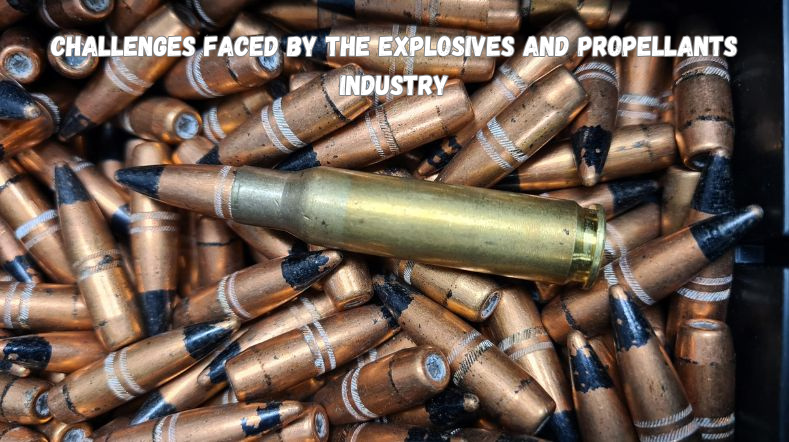The explosives and propellants industry faces several challenges due to its critical applications, environmental concerns, and regulatory requirements. Key challenges include:
1. Environmental Impact
- Pollution: Residues from manufacturing and detonation can contaminate soil, water, and air, posing ecological risks.
- Waste Management: Disposal of expired or unused explosives and propellants is complex and hazardous.
2. Safety Risks
- Accidental Detonation: Manufacturing, handling, and storage involve high risks of accidental explosions, requiring stringent safety protocols.
- Worker Safety: Exposure to toxic chemicals and hazardous environments increases health risks for workers.
3. Regulatory Compliance
- Stringent Regulations: Strict environmental, safety, and transport laws impose significant operational and financial burdens on manufacturers.
- Export Controls: International restrictions and licensing requirements limit market expansion.
4. Raw Material Dependence
- Supply Chain Vulnerabilities: Dependence on specific raw materials like ammonium nitrate and RDX makes the industry vulnerable to shortages or price fluctuations.
- Sustainability Concerns: Sourcing non-renewable materials conflicts with global sustainability goals.
5. Rising Costs
- Production Costs: High costs of advanced materials, safety measures, and compliance can affect profitability.
- R&D Investment: Innovation in eco-friendly and high-performance solutions requires significant financial resources.
6. Public Perception and Ethical Issues
- Defense Applications: Association with military use raises ethical concerns and public scrutiny.
- Civilian Safety: Accidents involving civilian-use explosives in mining or construction can damage public trust.
7. Technological Challenges
- Advancing Performance: Meeting the demand for higher efficiency and precision in applications like defense and aerospace requires constant technological innovation.
- Integration of Smart Technologies: Incorporating IoT and AI into traditional systems is a complex and resource-intensive process.
8. Competition from Alternatives
- Non-Explosive Solutions: Safer, non-explosive technologies in mining and construction are emerging as alternatives, reducing demand for conventional explosives.
9. Geopolitical Instability
- Export Restrictions: Trade restrictions and geopolitical tensions can disrupt supply chains and international sales.
- Terrorism Concerns: Strict controls are necessary to prevent misuse, adding layers of complexity to production and distribution.
10. Sustainability and Green Chemistry
- Transitioning to eco-friendly propellants and explosives is challenging due to technological and cost barriers.

















